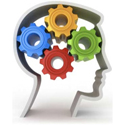Concept Development: Confirmation of the desired outcome and assistance to determine the most appropriate fitness solution. What type of facility, what size of facility, what components to include, which amenities are important, staffed or unattended, financial implications, etc.
Site Evaluation: Providing insight related to the planned location for the facility, whether as a free-standing site, as part of a larger development project, or within a corporate office building.
Competitor Analysis: Comprehensive research of competitors in the primary market including; types of facilities, program offerings, available exercise equipment, amenities, price points, target demographic, marketing strategies, and overall value proposition.
Facility Design: Working with clients architect to design the most appropriate fitness facility for the desired audience. Specifically assisting with decisions related to program components (what activities should be offered), size of spaces (how large should the group exercise studio be?), how many lockers are needed, layout considerations, interior design factors, appropriate finishes for various spaces, unique functional design elements, specifications for exercise equipment electrical and audio-visual requirements, placement of exercise equipment, and overall review of architectural plans. Helping determine the best use of existing space and layout, based on budget, consumer usage patterns, fitness trends, user demographics, and other factors.
 Exercise Equipment Recommendations: Don’t allow equipment dealers, equipment manufacturers representatives, or individuals that sell exercise equipment to drive your choices for the selection of exercise equipment, The purchase of exercise equipment is a major investment and should be based on a variety of factors including; the user demographics, space available, budget, usage patterns, planned programs, equipment dependability / reliability, manufacturers track record, equipment design and aesthetics, entertainment options, and trends in the fitness industry. A knowledgeable and unbiased third party can help ensure that the best choices are made to create the right mix of equipment for the best price.
Exercise Equipment Recommendations: Don’t allow equipment dealers, equipment manufacturers representatives, or individuals that sell exercise equipment to drive your choices for the selection of exercise equipment, The purchase of exercise equipment is a major investment and should be based on a variety of factors including; the user demographics, space available, budget, usage patterns, planned programs, equipment dependability / reliability, manufacturers track record, equipment design and aesthetics, entertainment options, and trends in the fitness industry. A knowledgeable and unbiased third party can help ensure that the best choices are made to create the right mix of equipment for the best price.
Preferred Vendors: Providing a list of proven, dependable, experienced vendors for fitness facility services and products such as exercise equipment, check-in / CRM software, audio-visual needs, professional liability insurance, locker room supplies, employee uniforms, healthy vending products, retail items, etc.
Financial Projections: Forecasting future financial implications related to the business model and budgeting ongoing costs to operate the facility.
Risk Management Guidance: Providing advice regarding risk management in the areas of; design, signage, user policies, liability waivers, health history (PAR-Q) forms, operating procedures, staff qualifications, emergency equipment, CPR & AED training, record keeping, etc.
Operating Policies & Procedures: Creating detailed templates / documents such as; policy and procedure manuals, opening and closing checklists, emergency and incident guidelines, customer service standards, facility inspection forms, exercise equipment maintenance, policies for participation, membership agreements, cancellation forms, check-in procedures, lost and found procedures, job specific training tools, and other operating outlines.
 Management Mentoring: During the “start-up” phase of a new fitness facility, clients often seek assistance with hiring key staff members and / or helping for a period of 30 -90 days immediately before and after opening to implement desired systems and accomplish a successful launch. Depending on the level of involvement desired, management support can be provided on an hourly (as needed) basis, or in the form of a monthly retainer allowance.
Management Mentoring: During the “start-up” phase of a new fitness facility, clients often seek assistance with hiring key staff members and / or helping for a period of 30 -90 days immediately before and after opening to implement desired systems and accomplish a successful launch. Depending on the level of involvement desired, management support can be provided on an hourly (as needed) basis, or in the form of a monthly retainer allowance.
Pre-Opening / Grand Opening: Suggestions and coordination for creative launch promotions including sign-ups, equipment demonstrations, fitness presentations, facility orientations, events, and other initiatives.
